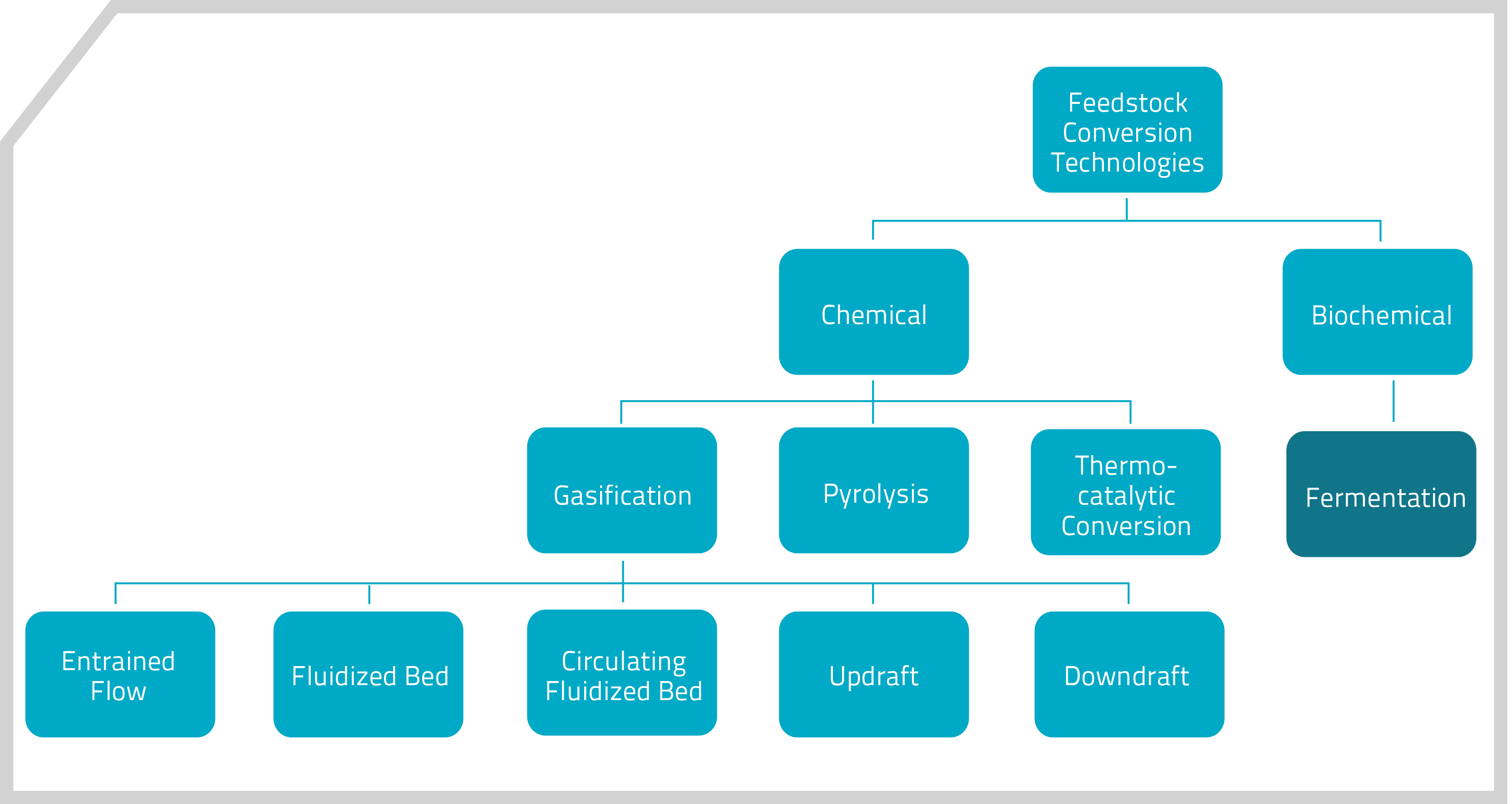
Fermentation uses enzymes to break down the simple sugars found in biomass and converts them to ethanol. There are two distinct types of fermentation that can be done with starchy biomass, such as corn: dry milling and wet milling. Cellulosic biomass, such as the corn stalks and husks (in other words, the woody and inedible portion of plants), is more resistant to fermentation because of the types of sugars it contains, and therefore requires a modified process.
Starchy Biomass Fermentation
Dry Milling
Starchy biomass is first ground into a meal. Water and enzymes are added. These enzymes convert the meal into its simple sugars, which move on to a high-pressure cooker prior to fermentation. Once the sugars have cooled, the fermentation yeast is added. Sugars from starchy biomass are broken down and converted to a mixture of ethanol and carbon dioxide; a process that takes about 50 hours. The ethanol is extracted from the mix, while the remaining grains and solubles can be processed and sold as livestock feed2.
Wet Milling
Starchy biomass is soaked in water for 1 to 2 days and then sorted into the different components of grain so that only the starch is fermented into ethanol. The fermentation process is identical to that used in dry milling2.
Cellulosic Biomass Fermentation
Fermenting cellulosic biomass is more difficult than fermenting starchy biomass for two reasons. The sugars are more difficult to access and are more resistant to fermentation enzymes.
To extract the sugars, they must be released from within the cellulose, which is found underneath the lignin and hemi-cellulose of the plant material, using a soaking process similar to wet milling. The biomass undergoes an acidic pre-treatment under high pressure and temperature to hydrolyze (break down) the cellulose into it glucose sugars1. The sugars are fermented as usual by adding water and enzymes, while the lignin left behind from pre-treatment is burned to power the system.
Much research has been conducted into finding the most effective fermentation enzyme for cellulosic biomass.
1 = http://www.nrel.gov/biomass/pdfs/40742.pdf
2 = http://www.ethanolrfa.org/pages/how-ethanol-is-made
